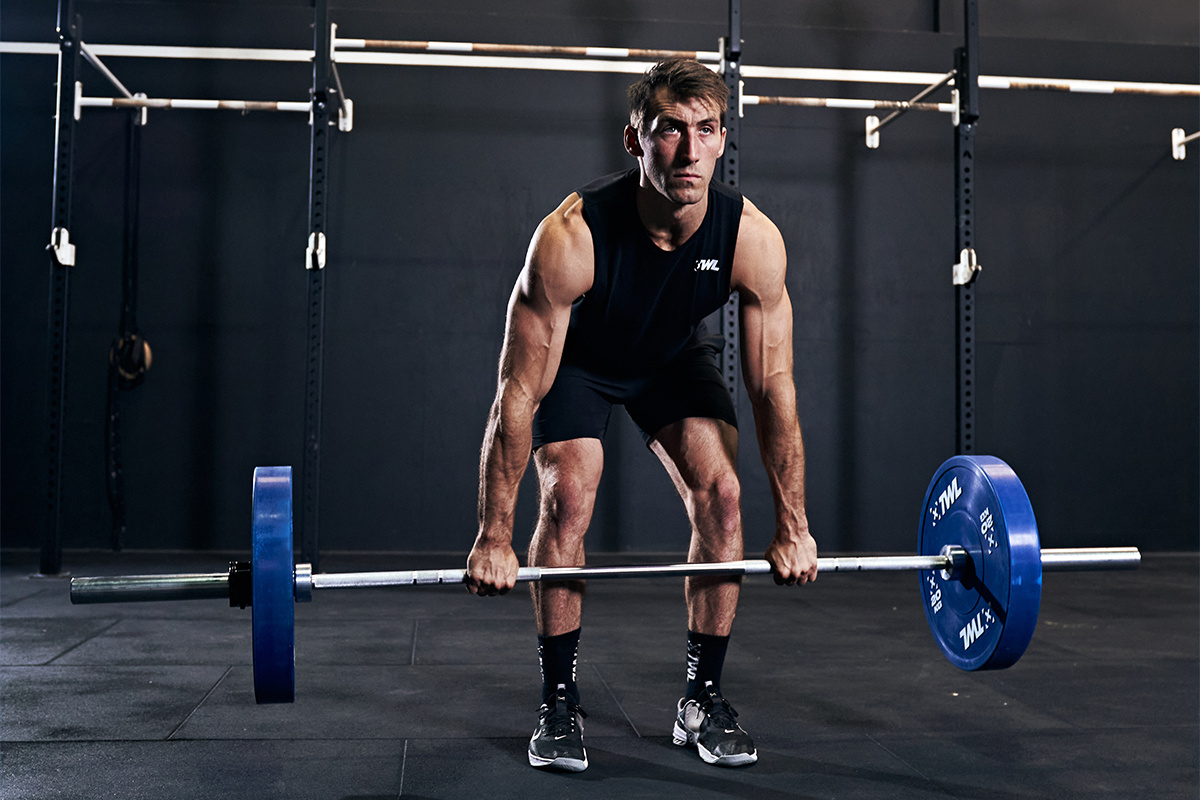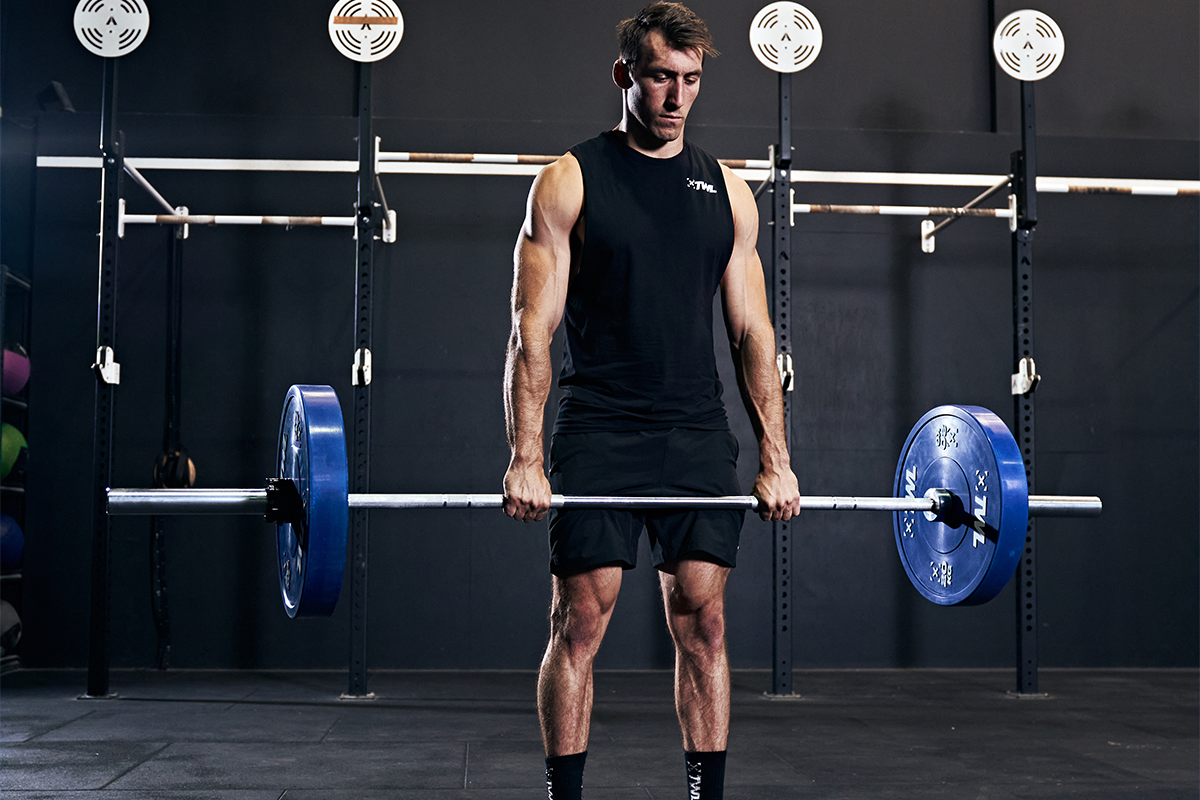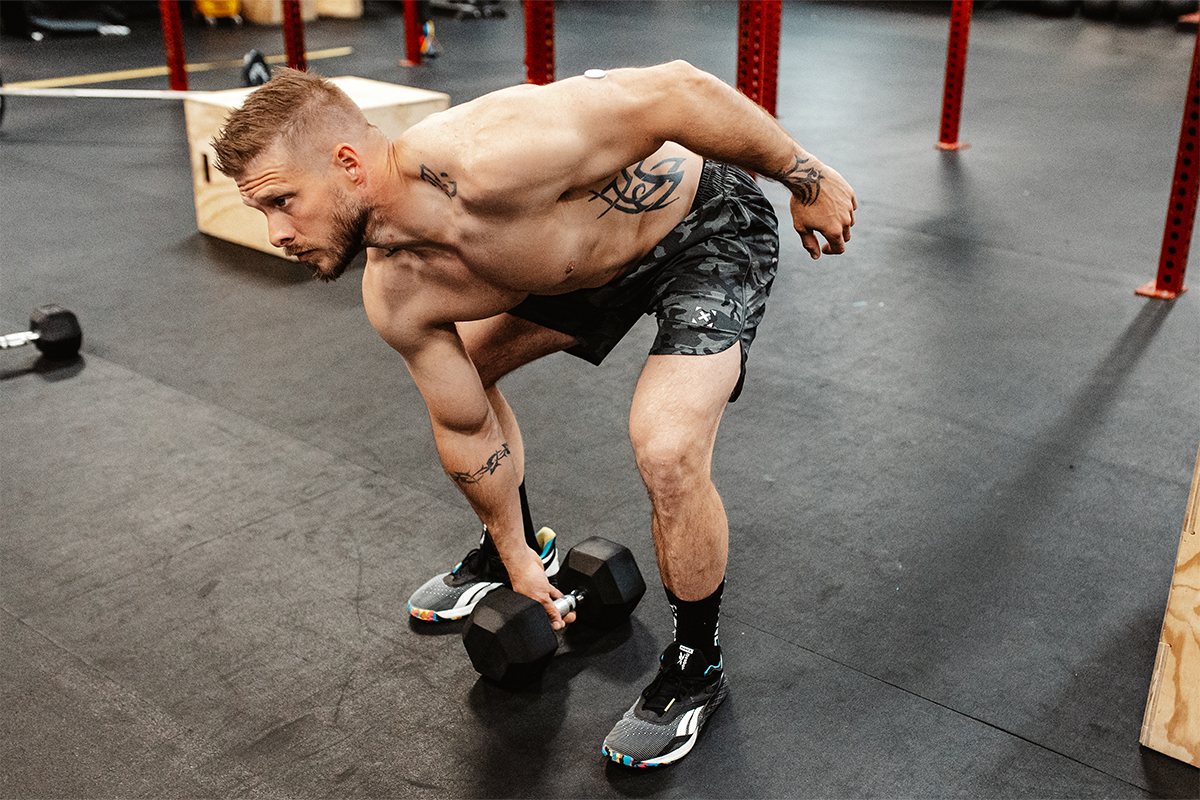Despite the deadlift’s seeming simplicity and its status as one of the foundational lifts (and an excellent compound movement), a lot of us make mistakes when trying to simply bend over and pick up the bar. Here are four common mistakes you might find yourself making when deadlifting — and some simple tweaks to correct them.
4 Common Deadlifting Mistakes That Athletes Make
1. Lifting With Locked Knees
Problem: While your legs should be relatively straight throughout most of the deadlift, keeping your knees locked from the beginning of the lift practically guarantees injury.
Solution: Your knees play an active (though relatively minor) role in the deadlift. At the bottom of the deadlift, make sure they are slightly bent — at about 45 degrees. As you lift the bar, they should straighten in sync with your hips.
2. Bending Your Legs Too Much
Problem: This one’s for all of the squatters out there. You’re so used to dropping into the bottom of your squat that doing anything else feels unnatural. But squatting your deadlift isn’t only wrong, it’s ineffective. When your posterior chain is properly engaged, you can lift far more than you ever could by trying to squat the weight up from the floor.
Solution: If you find yourself sitting back in a squat at the beginning or end of the deadlift, remind yourself this lift is largely about your hamstrings and glutes, not your quads. You should start from a half squat — that’s 45 degrees above parallel — and stand the weight up by pulling with your hamstrings and squeezing your glutes. Your hips are the primary hinge in the deadlift, while your knees should bend just enough to get your hands on the bar and keep your torso in the proper position.
3. Hips Rising Before Everything Else
Problem: This mistake is a common overcorrection made by the deadlift squatter (see #2). To make sure they’re not squatting the deadlift, they stick their butt up in the air ahead of their torso. This puts your back in a horrible position, and if it doesn’t hurt you now, it will definitely leave you hurting tomorrow.
Solution: When deadlifting correctly, your hips should rise with your torso, until your legs reach full extension (not overextension). Then, your torso should stand up the rest of the way, bringing the bar with it. Lowering the bar properly is the same in reverse: hips hinge backward and knees bend slightly to lower the torso to the proper angle and return the barbell to the floor.
4. Lifting With a Rounded Back
Problem: The deadlift is the ultimate proof poor posture is bad for your health. Deadlift any amount of weight with a rounded back and you’re bound to hurt yourself.
Solution: Make sure you set up correctly. The bar should start on the floor over the center of your feet (the peak of your arches). Your feet should be about hip-width apart; your hands should grasp the bar just outside of your legs. Make sure your hips are in the half squat (see #1 and #2). Now, with your chest up, squeeze your lats, brace your shoulders and core, take a breath, and stand up. Maintain this tension throughout the entire lift, until you place the bar back on the floor.
Important note: Many people solve the problem of a rounded back by simply wearing a belt. When you’re training with lighter or moderate loads, remember you need to continue working on building your own strength. It’s when you’re approaching heavier or maximal loads that a belt should come into play.
What other mistakes have you seen (or made) while doing the deadlift?
Need help improving? Sign up for our free deadlift program, in partnership with 98 Gym.
















